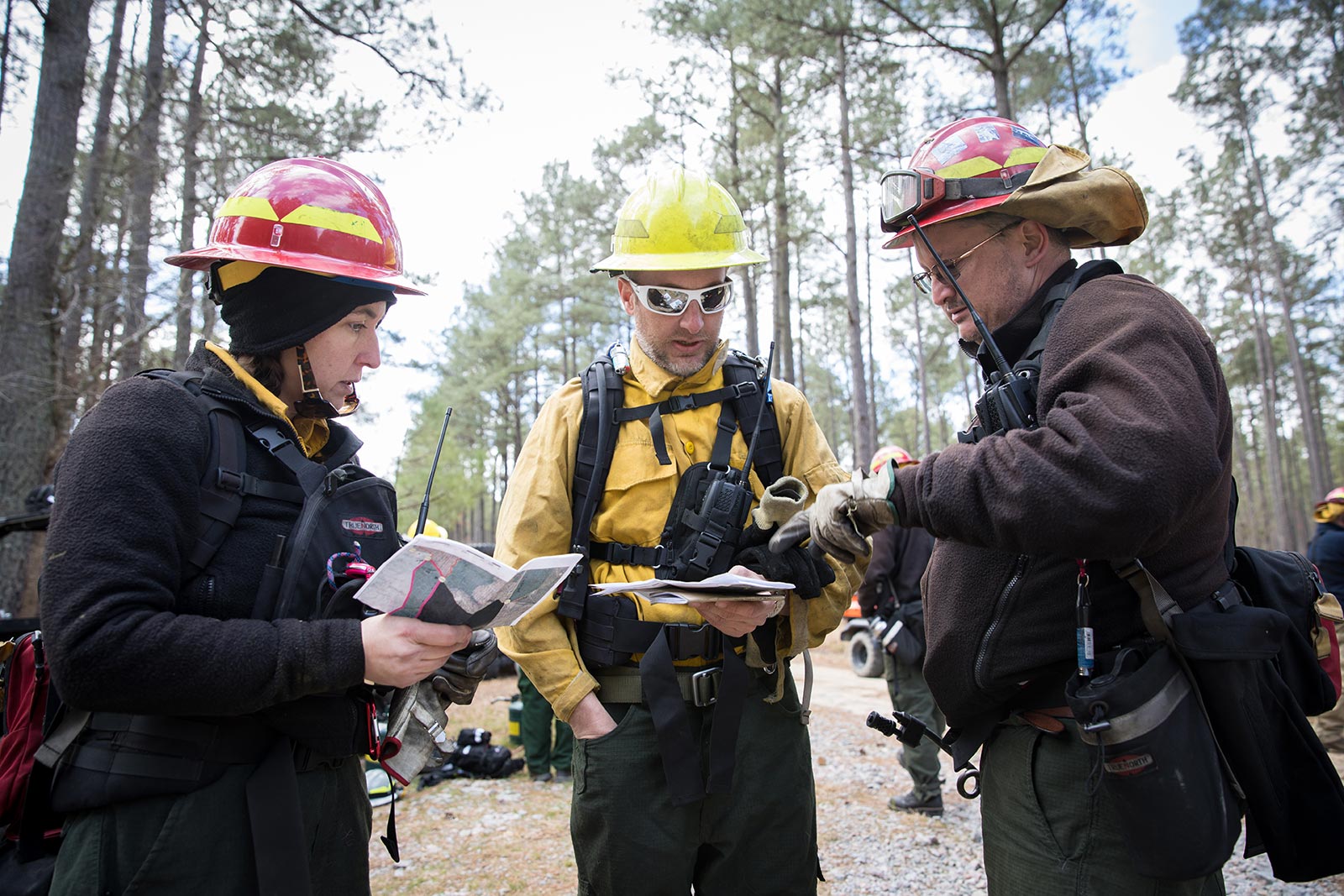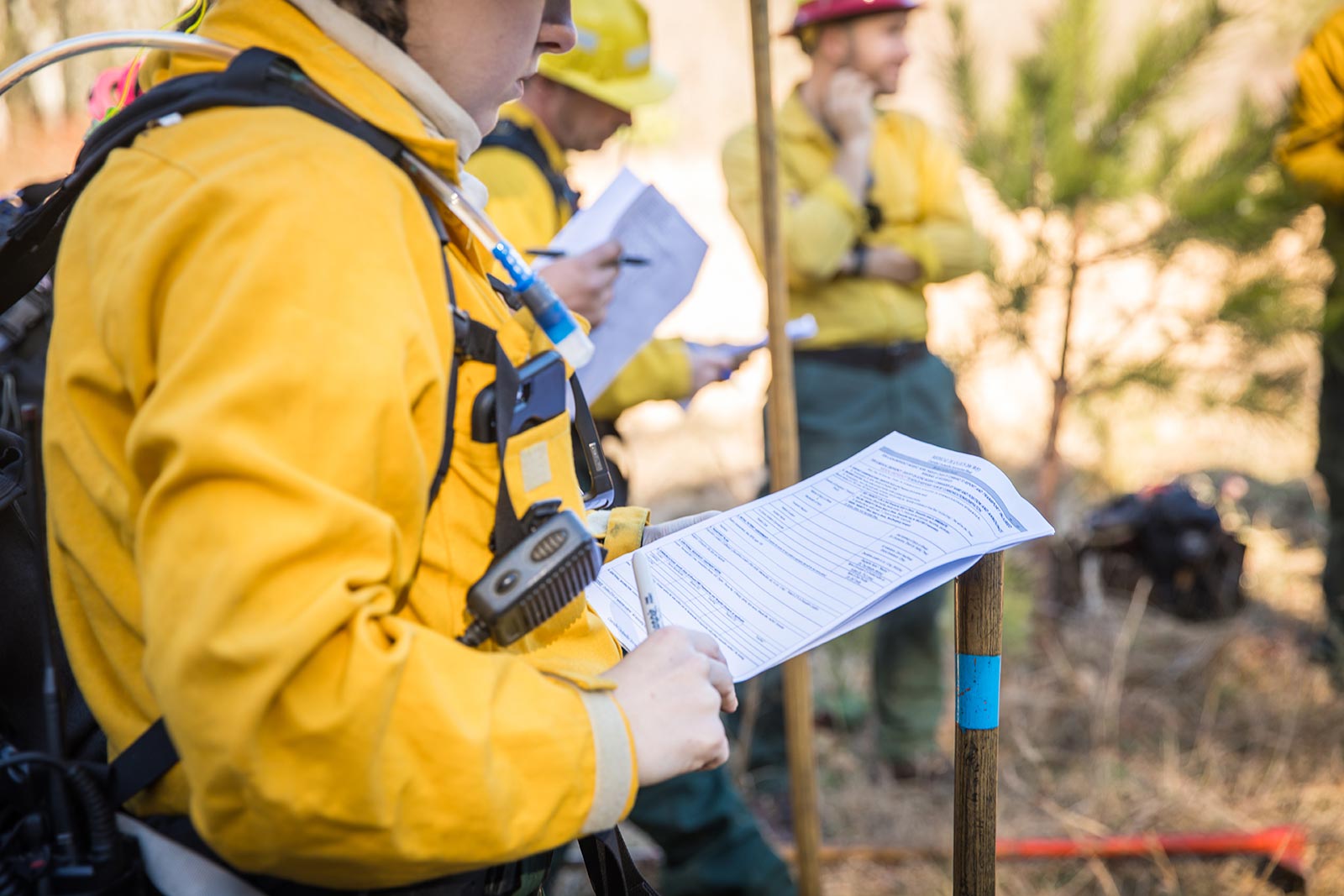How the Team Prescribes a Fire

Prescribed fire is the intentional use of fire in a specific time and place, under established conditions and specifications, to accomplish specific biological or resource management objectives. In the planning of a prescribed burn, the assigned burn boss actually writes a detailed “prescription” for the burn.
All prescribed burn plans must contain:
- Site location and map, including number of acres to burn
- Name of burn boss
- Management goals and specific burn objectives for the burn
- A map of the burn unit (area to be burned) that includes a description of the fuels to be burned (what type of vegetation), the planned firebreaks and control lines, what preparation work has been done, and any major hazards that may exist within the burn unit and adjacent to it
- A smoke management plan that includes smoke management objectives, potential critical smoke-sensitive areas, and techniques that will be used to mitigate potential impacts from smoke
- Weather and fuel parameters, to include any wind directions that would positively or negatively impact the burn, the day’s relative humidity, wind speed, atmospheric mixing height, and a measurement of drought conditions
- A list of personnel and equipment needed
- Specific plans for igniting the fire, holding or containing the fire, and a contingency plan in case of error
- Contact information for all staff and their emergency contacts

On the day of the burn, the burn boss notifies relevant authorities of the burn, such as local fire departments, and the Department of Forestry and evaluates the National Weather Service fire weather forecast for that specific area. If the weather conditions don’t meet what was prescribed in the burn plan, the burn boss cancels the burn. A test fire is conducted to make sure fire behavior is within range of what the burn plan dictates.
Not all fires are the same, or have the same effects. Depending on the amount and type of fuel in the area (vegetation that will burn) and the weather of the day, fires can burn at varying intensities. Further complicating things, the intensity can be altered by the way or pattern the fire is ignited. Some patterns will allow a hotter fire when that is desired while other patterns will allow for a cooler, slower fire to burn. When the burn boss creates the burn plan, they take into account what intensity of fire is needed to create the desired effect on the wildlife habitat. Fire intensity also depends on whether that specific area has been burned before in the past. DWR Wildlife Management Area supervisors keep a close eye on their burn units to decide when and how a prescribed burn might benefit the habitat.
Good Fire How DWR Uses Prescribed Fire to Restore the Wild
We’ve been conditioned to think of fire as solely a destructive force, but for wildlife, forests, and meadows, fire can also be restorative and a force for good. Prescribed fire is #GoodFire.

